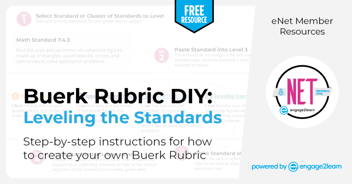Stop (Unintentionally) Rewarding Toxic Behaviors and Measure What Matters Most. | engage2learn
It is interesting to observe how different ed leaders reacted to the release of accountability labels. This past month, it seems as though many leaders have been very intentional about their messaging; that is, how they position themselves regarding these labels, as they well should. The stance a leader takes in regard to the Accountability System labels has long-lasting and far-reaching impact on an organization just like any other Recognition Systems within an organization. Leaders who understand this phenomenon are intentional about using the opportunity to enhance the culture. Leaders who do not understand this phenomenon risk creating confusion, conflict or even hypocrisy in the culture of their organizations.
We are using the term “Recognition Systems” to refer to the formal and/or informal system you have in your organization that highlights, rewards, badges, calls attention to, or elevates people for particular behaviors, actions, or work. Recognition Systems send a message to everyone in the organization – either a desired message by design or an unintentional message by default – about what the organization values and how to receive tangible or intangible benefit from the system. Many times, the unintentional message motivates behaviors that we are actively trying to change or decrease in our organizations, because talking or training are not nearly as influential to the culture of an organization as Recognition Systems. That is one of the things that I learned in pursuit of my undergraduate degree in psychology: Recognition Systems shape behavior profoundly.
Our brains are very efficient, and we are historically motivated by the reinforcements that are built into the systems for which we work. Therefore, the behaviors that you would like to eliminate within your organization can be extinguished by removing the recognition and/or reinforcement system aligned to them. The opposite is also true. Behaviors that you desire to see within your organization to make your workplace a thriving culture in which everyone is engaged and growing can also be encouraged and diffused through recognizing and, intentionally, rewarding that specific behavior.
Measure and recognize what you value because your organization will surely value what you measure and recognize.
It is important to note that every system is designed to get exactly the results that it gets. Recognition Systems are one of the most influential mechanisms for implementation to shape behavior and, thereby, culture. That can be a dangerous thing, or you can look at it as a golden opportunity. For instance, let’s say that you value collaboration for your organization’s culture. Then, why not set up a system that will recognize when employees are being collaborative and reward that desired behavior? When it comes to measuring and then rewarding/recognizing what we value, people often feel anxious about measuring what matters most because they often say or think that the things they value most are hard to measure.
We have to be careful about what we measure because what we measure will inevitably become what we value. When we have to measure something we do not value, we can mitigate the effect of that measure on the organizational culture by being intentional about minimizing the impact of that particular measure. For example, let’s just say that you do not value the results of the standardized testing system as a benchmark of the effectiveness of your schools and your teachers. Or, perhaps you do not value the testing and accountability system as the only measure of the effectiveness of your schools and your teachers. As a leader, the appropriate response would be to minimize the value of that measure by downplaying it or highlighting additional or other measures of effectiveness.
Recommendations for Measuring What You Value
- The most important thing to remember is that whatever you’re recognizing is precisely what is going to be valued by the organization; it will dictate behaviors from that point forward. Therefore, align the Recognition Systems to your desired practices or behaviors or Culture Tenets. (See blog on Aligning Your Beliefs to Behaviors.)
- Now, I know what you are thinking, and I want to reassure you that it is easier than you might think to measure the intangibles that you value. There are many tools already out there to gauge intangible behaviors. See this short list, which isn’t all-inclusive; so many have been developed and are available for public use!
- Thirdly, I would like to remind you that it does not have to be 100% scientific! You can literally reward and recognize examples of desired behaviors through storytelling…so simple. Consider video or social media as a way to highlight practices or behaviors you value and watch the impact on your organization’s culture.
- Finally, make sure to “scrub” your current Recognition Systems to align them to what you value and strategically abandon any current systems that do not align. if you notice a behavior that does not align to your ideal organizational culture, check your Recognition Systems and ask yourself: “Why would this person [or team, or campus, or group] be exhibiting this behavior if it is not being reinforced by our current systems?” More often than not, they wouldn’t.
Scrub Your Recognition Systems
I would now like to challenge you to assess your current Recognition Systems. Below is a list of examples that you may want to review to determine if they are aligned with the desired behaviors and culture of your particular organization.
- Teacher-of-the-Year Program
- Stipend Program
- Educational Foundation Grants Program
- Promotional System
- Walk-Through Forms
- Evaluation System
- Department Chair Positions
- School Board Recognition
What about the banners hanging on the walls of your schools? What gets reported to your district’s Board of Trustees? Who gets asked to serve as committee members for decision-making in your district or on your campus? And what about money? Is salary linked to the “best” titles? How are these things decided and by whom? All of these examples represent formal and informal Recognition Systems within the public school district, each with a profound influence upon the behaviors of your organizational culture.
Reward and Recognition the e2L Way: This is how we do it!
e2L has worked on these systems for about a year now; we finally have an elegant solution that we really love for measuring and recognizing our intangible cultural tenets we value so much as an organization. By aligning our reward and recognition protocol to our Cultural Tenets, it seems to be working in three distinct ways:
- Measure. We measure them through triangulated data we receive from a self-assessment, a peer assessment, and a 360-degree assessment. The survey data from the peer assessment is used for recognition and the data from the 360 is shared with the individual for self-reflection.
- Model. We badge on our Cultural Tenets, we tell stories about the exemplar behaviors and hold those up as the standard to which we aspire as an organization.
- Mentor. We also use our Cultural Tenets for our hiring, coaching, and we even terminate using them. In the unfortunate circumstance, when we have had to fire someone, we make it clear if he or she is being terminated for violating the Cultural Tenets.
I know that you have significant, yet intangible behaviors within your organization or district that you would like to recognize. I am confident that you will find a way to do that while also extinguishing those behaviors that you longer desire for your culture. If you would like more ideas or simply need a thought partner in this process, feel free to reach out to me via email. Let’s all be the kind of leaders in education that eliminate systems where people can take advantage of political structures and Recognition Systems to advance their own agendas to the detriment of the organization and its learners. Instead, let’s be intentional about creating cultures where people are engaged, growing, and thriving!




